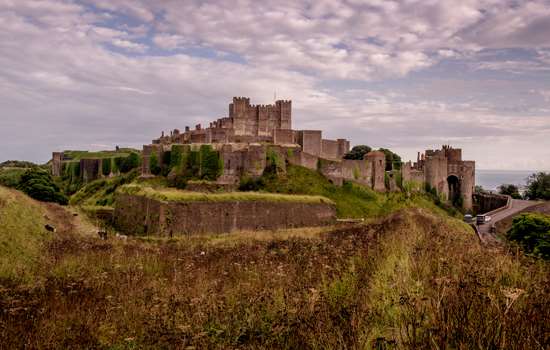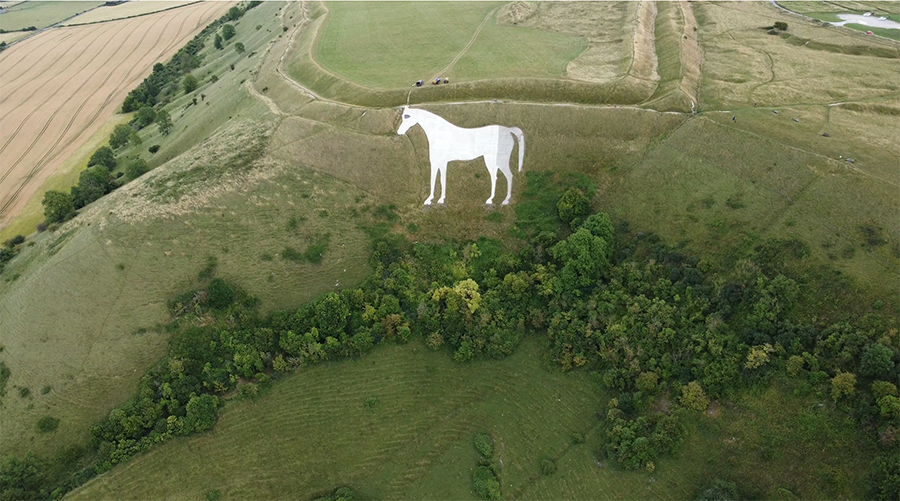History of the White Horse
The striking figure of the White Horse is a much-loved local landmark and symbol for Westbury and Wiltshire. It sits in an area of chalk grassland near the Iron Age fort of Bratton Camp, built 2000 years ago. Local records suggest that the figure of the horse was cut into the chalk in the late 17th century, probably to commemorate the supposed Battle of Ethandun, thought to have taken place near Bratton Camp in AD 878.
The original chalk surface of the horse would have had to be scoured regularly to keep it white, with the last recorded scouring taking place in 1853. However, in the late 1950s, the horse was preserved by covering it in white-painted concrete.
Keeping the horse white
In the decades following the application of the 1950s concrete layer, the White Horse began to turn grey. It was overlaid with a newer surface of white concrete in 1993, with the hope that this would keep the horse whiter for longer and require less maintenance. Unfortunately this proved not to be the case. The horse’s position – on a steep incline, facing westerly weather, with seasonal direct sunlight – means it is not possible to prevent water running off the surrounding grassland, resulting in algae growth.
Around the year 2000, the whiteness had deteriorated to a degree that required significant attention and we began investigations to see what improvements could be made. In 2006, the horse was cleaned with a specialist steam cleaning system called ThermaTech in a bid to remove the organic growth that makes the surface grey. This created a clean surface for paint to adhere to, and environmentally friendly white paint was applied. Throughout this conservation work, extra care was taken to avoid substances that could harm the Site of Special Scientific Interest that surrounds the White Horse.
Recent Cleaning
There have been three further rounds of cleaning and repainting carried out by specialist contractors and volunteers in 2011, 2016, and 2018.
In 2023, the horse was cleaned once again. A conservation team abseiled down the near-vertical face of the 180ft (about 55m) tall horse in order to clean, repair and paint it. The 8-week process first involved ThermaTech cleaning – spraying steam at 150°C to sterilise the porous concrete to a depth of around 30mm. This was followed by repairs to the joints between the many separate pieces that make up the horse, before applying multiple coats of a specialist paint to the entire surface.
Over the years, many options have been trialled for keeping the White Horse looking its best. Recent research by English Heritage has now led to an improved programme of care, with further regular maintenance and repainting expected in the years to come.
Explore more
-

History of Bratton Camp and White Horse
Read more about the earthwork defences of an Iron Age fort that were built at Bratton Camp over 2,000 years ago, and the White Horse that was probably cut into the chalk about 400 years ago.
-

Buildings Conservation
Learn more about some of the techniques we use to care for our buildings, and explore some of the unique projects we’ve carried out in recent years.
-

Conservation on the road
Our conservation van is on tour again this year, hosting hands-on conservation activities for you to join.
